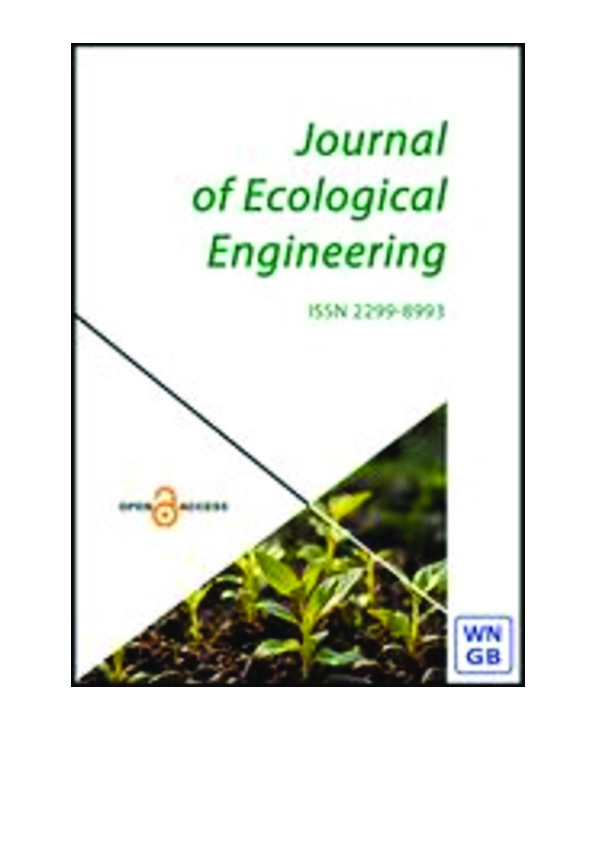id: 38824
Title: Bioindication characteristics of trees in solid protection forest strips depending on intensive agriculture
Authors: Didur I., Tkachuk O., Pantsyreva H., Chabanuk Ya., Pankova S., Hutsol H., Mazur O., Kovka N.
Keywords: agricultural crops, winter wheat, corn, field protection forest strips, bioindicative assessment
Date of publication: 2025-04-25 10:51:53
Last changes: 2025-04-25 10:51:53
Year of publication: 2025
Summary: The article presents promising types of bioindicators in agroecosystems – forest shelterbelts, which are closely adjacent to crops and are often themselves contaminated due to the ingress of mineral fertilizers and pesticides onto the leaves or into the sub-stem soil layer, and during mechanical tillage – undergo significant pollination. The main crops of the forest-steppe of Ukraine are corn and winter wheat, therefore it is their cultivation that can have the greatest impact on the functioning and ecological state of forest shelterbelts. It has been established that the main factors influencing the technologies of growing agricultural crops on the agro-ecological state of forest shelterbelts are the main soil tillage, the application of mineral fertilizers, synthetic pesticides, growth regulators and other preparations. One of the most typical reactions of trees to pollution due to the intensification of agriculture is the manifestation of chlorosis and necrosis on the leaves of plants. Our observations among the tree and shrub vegetation of the main shelterbelts revealed necrosis on the leaves of Tatar honeysuckle plants in the amount of 1–12% of leaves, common maple – on 12–30% of leaves, common ash – on 12–15% of leaves. On the leaves of trees of auxiliary shelterbelts, necrosis was widespread on 15% of holm oak leaves and 5–8% of common ash leaves. The surface area of necrosis development on the leaves of the tree and shrub vegetation of the main shelterbelts was: in Tatar honeysuckle plants – 4–20%, in common maple plants – 7–60%, in common ash plants – 7–12%. In plants of auxiliary shelterbelts, the proportion of necrosis on the leaf of common oak plants was 15%, and in common ash – 5–12%. The spread of spotting on the tree-shrub vegetation of the main shelterbelts was detected on the leaves of common ash in the amount of 35% of the total volume of leaves on the tree crown, on the leaves of common maple – in the amount of 10–20% and on the leaves of white acacia – in the amount of 30% of the total volume of leaves of the crown of one tree. In the trees of the auxiliary shelterbelts, the spread of spotting was detected on 60% of the leaves of common oak, common maple and common ash. The proportion of the surface of one common ash leaf with spotting was about 20%, common maple – 40–60%, white acacia – 30%. In the trees of the auxiliary shelterbelts, the proportion of the surface of a common oak leaf with spotting was 85%, common maple and common ash – 60%. The manifestation of the general degradation of tree-shrub-herbaceous vegetation of the main shelterbelts in the studied area was 7–18%, and of the auxiliary shelterbelts – 7–15%. The greatest manifestation of the degradation of tree-shrub-herbaceous vegetation was found in shelterbelts adjacent to winter wheat and corn crops, and the least – in those adjacent to soybean crops.
URI: http://www.vsau.vin.ua/repository/getfile.php/38824.pdf
Publication type: Статті Scopus
Publication: Journal of Ecological Engineering. 2025, Vol. 26, Issue 6. P. 315–328 DOI: https://doi.org/10.12911/22998993/202749
In the collections :
Published by: Адміністратор
File : 38824.pdf Size : 968334 byte Format : Adobe PDF Access : For all

| |
|
|